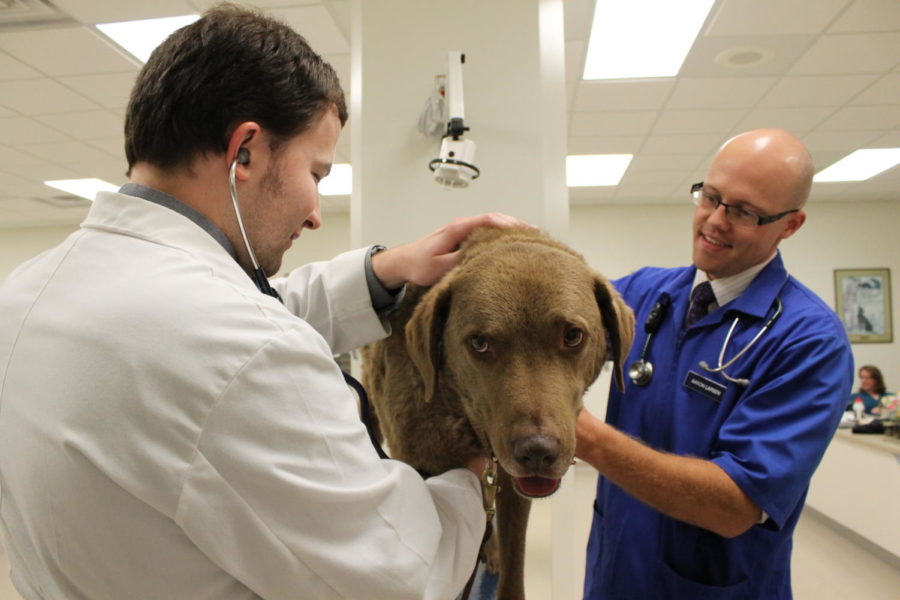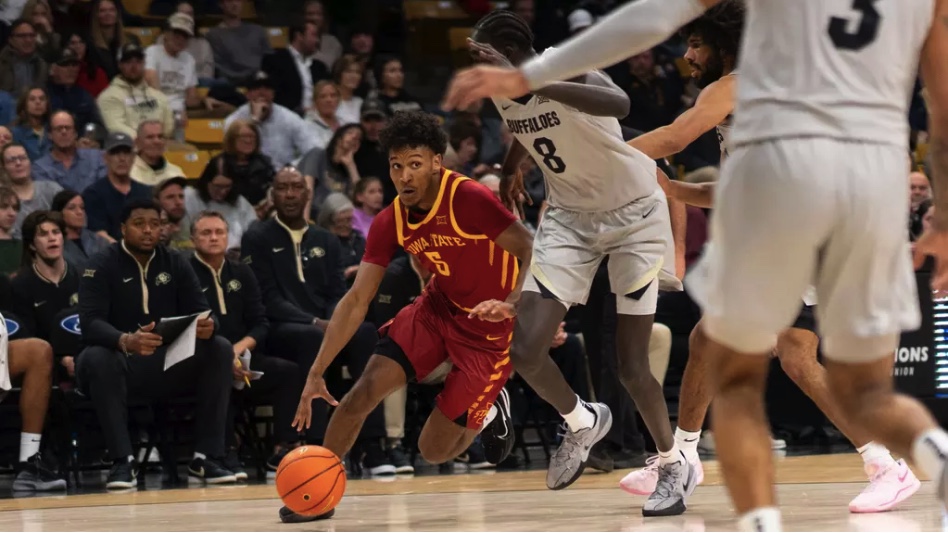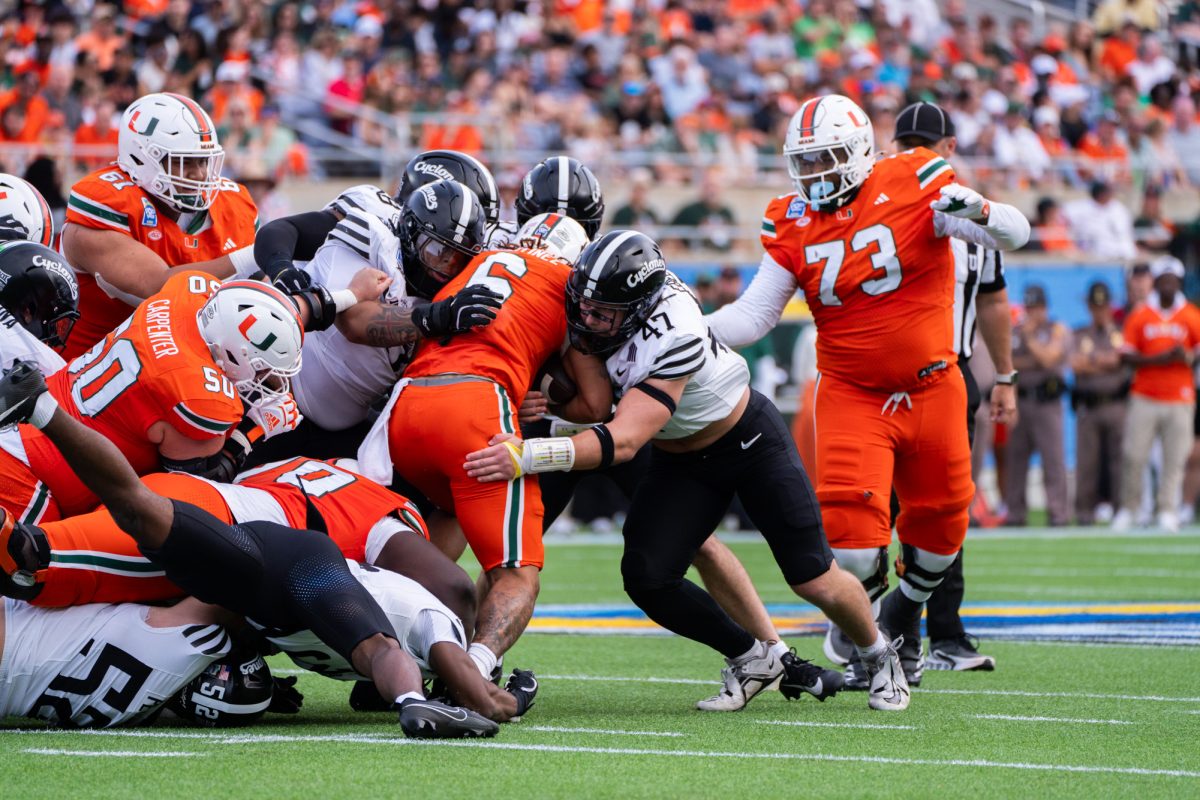Hixon-Lied Small Animal Hospital completes Phase II
Photo Illustration: Nur Surya Abu/Iowa State Daily
Ryder, an 8-year-old Chesapeake Bay Retriever, is being examined by veterinarian Andrew Barker with assistance from Iowa State’s veterinary student Aaron Larsen.
September 19, 2013
Iowa State has completed its second phase of expansion on the Hixson-Lied Small Animal Hospital.
The small animal hospital cost about $90 million and was finished Sept. 12.
Iowa State decided to revamp the entire animal hospital many years ago.
This vision included phases of expansion focusing on both large animals and small animals.
Because of these new renovations, Dr. Karl Kraus, chief of orthopedic and neurosurgery for Veterinary Clinical Sciences, said he believes that Iowa State now has one of the best teaching hospitals in the world.
“We service the community by taking care of their patients. We service Iowa by providing the residents of Iowa veterinary school to get trained and we service the United States as a hub of specialty training,” said Kraus.
Iowa State is one of only 27 veterinary schools in North America.
Kraus said the teaching hospital has three purposes.
“Service — which means we see patients. Teaching — we teach for undergraduates, mostly vet medical students, to residents and graduate students,” Kraus said. “And research — in which we do both clinical and basic science research.”
The students learning in the hospital are not yet professionals but do work closely with licensed veterinarians. Kraus himself has seven students under him.
“When they walk through the door, they will take the history, perform the physical exam and then come to me with either a diagnostic or therapeutic plan,” Kraus said.
Kraus stated they deal with a problem by gathering as much information as possible. They then rule out certain possibilities before figuring out what other diagnostics are needed in order to make an accurate diagnosis.
New technology in the hospital is making the learning process easier.
Some of this new technology includes a Spiral CT, MRI, Digital C-Arm and an HD camera. These technologies allow students to watch surgeries as they are being performed.
“We perform world class research here. It provides notoriety, in regard to research, but also in training of surgeons,” Kraus said. “The faculty here have trained one out of nine veterinary surgeons in the United States, so we have trained a good percentage of the nation.”
The doctors at the hospital also have many years of experience from other institutions across the nation. Kraus said he does not think people appreciate the level of expertise offered at the hospital. He said he is always surprised when people are unaware.







